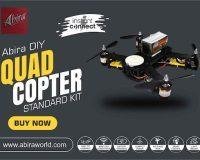Researchers at the University of Zurich have devised a novel method for autonomously flying quadrotors across unfamiliar, complicated situations at high speeds using just onboard sensors and computing. The novel method is expected to be beneficial on construction sites or for security applications.
Drones are hard to beat when it comes to exploring complicated and unfamiliar environments such as forests, buildings, or caves. They are tiny, quick, and agile, and can carry sensors and payloads almost everywhere. However, without a map, autonomous drones will struggle to navigate a new area. For the time being, skilled human pilots are required to fully realize the potential of drones. As per the new approach, the autonomous quadrotor can fly through any complex and unseen environment at a speed of up to 40 km/h without crashing into obstacles. It achieved relying only on the quadrotor’s onboard cameras and computation. The neural network of the drone learned to fly by observing a “simulated expert” an algorithm that flew a computer-generated drone through a simulated environment packed with challenging obstacles. The algorithm had complete information on the condition of the quadrotor and sensor data, and it could always count on enough time and processing capacity to identify the optimum trajectory. The system was tested in the real world, where it was able to fly without collisions at speeds of up to 40 km/h.
The researchers add that the same technique may be beneficial for enhancing the performance of self-driving cars, or it could even pave the way for a new means of training AI systems for operations in domains where data collection is difficult or impossible.



